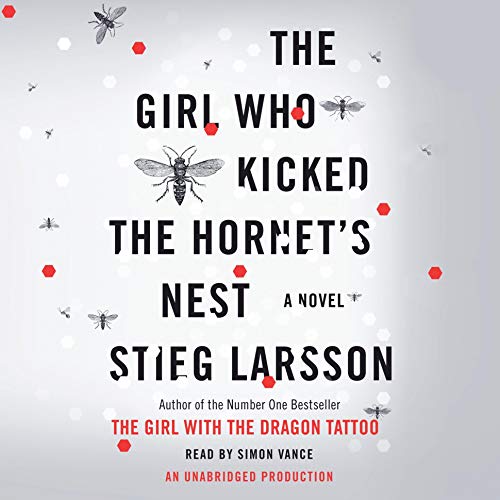Buy Now: https://amzn.to/3lwPn7Z
Stieg Larsson writes with an attention to detail of an investigative journalist seeking to create a narrative that educates and entertains. The Girl Who Kicked the Hornet’s Nest is an excellent work of fiction that has the mimesis and verisimilitude that college professors speak of when addressing works in a literature course.
Hornet’s Nest carries the momentum from the end of Fire, into what is a completely different text. The intricate nature of Hornet’s Nest requires a notes section, at the end of the book, to verify the allusions to real elements utilized in the creation of the story. Larsson utilized his expertise in journalism, and with aspects of counterculture to impress upon the reader the importance of his story. By the middle of the book the reader feels a sense of trepidation and wants, no needs, for the main character Lisbeth Salander to pull through this murky, distorted novel that captures the shadowy and conspiracy laden nature of countries that dealt with the darkness of the Cold War.
The plot itself is simply the story of a dysfunctional family, and the characters that align to bring justice to one woman. This woman, Lisbeth Salander, is a metaphor for women who have dealt with the uncertainty of a justice system that aligns itself with men and caters to the paternalistic slant of all facets of life. Hornet’s Nest takes the mystery novel and details every aspect leaving nothing to question and effectively tying up every loose end successfully without Deus Ex Machina or some simplistic resolution.
The climax of the text feels never ending but can be given one point of clarity at the end of the book in the courtroom scene which literally makes the reader laugh, shout and pump their fist in approval of the decimation of authority figures that have made the life of Lisbeth Salander a complicated mess of injustice. This is not the resolution, however. In a twist the book does not end once Salander is somewhat vindicated, the book continues forward to enhance the reader’s understanding of points that were began in The Girl with The Dragon Tattoo and The Girl Who Played With Fire.
In short, The Girl Who Kicked the Hornet’s Nest is damn good and the Millennium trilogy is worth the investment of three weeks. At 600 pages each, the books read incredibly fast and for a text that is complicated, it is clearly drawn and presented. Read it and then watch the films. Rest In Peace to a masterful writer.



